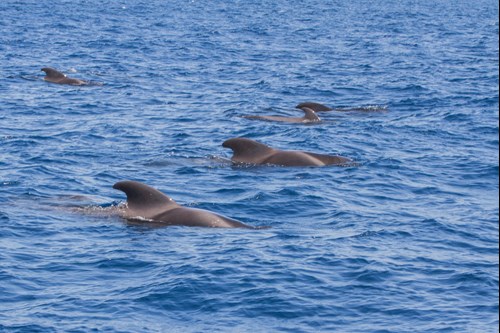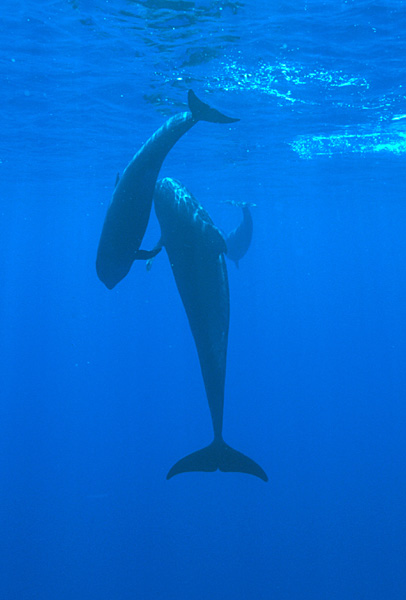Canary Islands is one of the places with the largest diversity of cetaceans, and is also the most diverse in Europe. In the Canary Islands you will find 30 of the 87 species of cetaceans that inhabit the seabed of the planet and is considered one of the best places in the world for whale watching.
The geographical situation of the Canary Islands, at the meeting point between the cold waters of the Atlantic and tropical waters, leads to species permanently inhabit its waters, along with migrating throughout the year between North and South, can be seen there.
On the southwest coast of La Gomera, the marine area is Playa de Santiago-Valle Gran Rey, this space was declared in 2011, Special Area of Conservation (SACs) within the Natura 2000 European program created to ensure the survival long term most endangered species and natural habitats in Europe, and aims to halt the loss of biodiversity.
This place is considered the greatest diversity of cetaceans of the European Union in relation to its surface, getting to have the presence of 22 species of cetaceans in certain seasons, the 30 cited in the Canary Islands. Among these species they are:
Bottlenose dolphins, the largest of the true dolphins in the Canary Islands can reach 3.4 m and weigh more than 500 kg. Their life expectancy is around 30 years and can reach top speeds of 35 km / h. They feed on fish, invertebrates and squid. This dolphin lives all year in our waters.
The spotted dolphin, can reach 2.30 m and weigh 140 kg. Their diet is based on schooling fish, squid and invertebrates. It is a fast swimmer and often jumps, performing extensive low jumps.
The finned pilot whale. They can see often in these waters as there is a large colony, who lives permanently in them. Easy to see, especially in the morning, they are very friendly and always travel in a group or family. They can reach a maximum length of 7 m and weigh between 1 and 4 tons. It feeds on squid, octopus and fish.
The blue whale, with an average size of 24 to 27m and weight ranging from 100 to 120 tons, mainly feeds on Krill. There have been examples of almost 30m in length and 173 tons in weight, which makes this species the largest known animal on planet Earth today.
The humpback whale, so called because arching its back when sumerge- passes near the islands to be crossing point during the summer, following their way between breeding grounds in the Cape Verde Islands and foraging in the north Atlantic in summer. They can measure up to 19 m in length. They feed on a small crustaceans known as Krill (look like shrimp) and fish.
The killer whale (Orcinus orca) and false killer whale (false killer whale) passing through the islands following the bluefin tuna when they go back to the Mediterranean.
In La Gomera, and generally in the Canary Islands, we can find stable colonies of cetaceans throughout the year, due to the following factors:
- It is a coastline with calm water most of the year.
- The waters are warm. The average water temperature varies between 18 and 20 degrees Celsius.
- The depth of these waters between the island of Tenerife and La Gomera Island has an average of 1,500 meters. with a maximum depth of approximately 2,400 meters.
- Its waters are very rich in organic matter, especially fish and squid and other cephalopods, also being able to find copies of giant squid, which is the favorite food of the sperm whale.
The boats used for whale sightings, wear the distinctive “Blue Boat” and comply with laws that ensure full and happy life cetaceans living in the Canary waters. Activities like feeding them and bathing them are not allowed on the cruise so they can continue to enjoy their habitat in total freedom.
The friendly dolphins and majestic whales await you! It is a wonderful and absolutely recommended experience!


